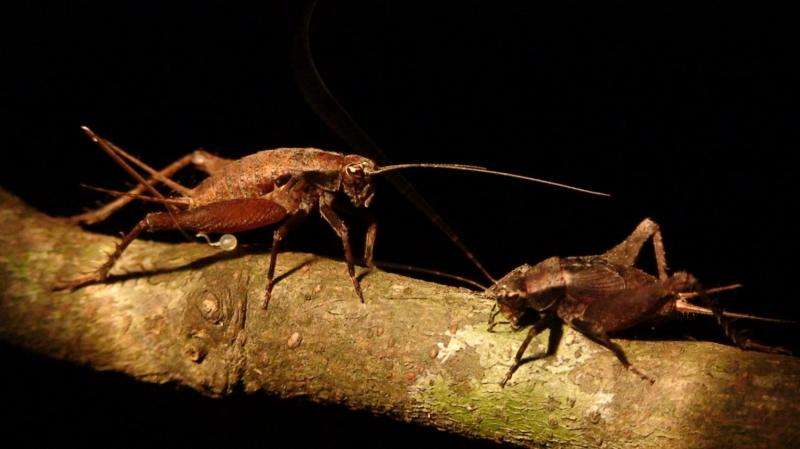Team discovers new acoustic, vibrational duet in crickets

A Dartmouth-led team has discovered that one group of crickets has a unique communication system that likely evolved from males startling females into revealing their location.
The study, which sheds light on the evolution of acoustic communication systems in animals, appears in the journal Current Biology.
"The origins of communication signals have long fascinated evolutionary biologists, and multiple potential mechanisms for these origins have been proposed," says co-lead author Hannah ter Hofstede, an assistant professor at Dartmouth who investigates how sensory systems evolve to encode the environmental cues that are crucial for an animal's survival and reproduction. "Our results demonstrate how sensory exploitation of anti-predator behavior can also evolve into a classic communication system that benefits both senders and receivers, and that this unexpected origin might be more common than previously appreciated."
Most crickets distinguish between mates and predators based on the frequency of sound: male crickets produce low frequency calls to attract females, while bats produce high frequency (ultrasonic) sounds for echolocation. The researchers studied a group of crickets in which males produce exceptionally high frequency calls to determine how they attract females by using sounds similar to a predator. They found the typical female behavior of walking to calling males has been lost in these crickets. Instead, the females shake their whole body to produce a vibrational signal after each male call. The males then follow these vibrations to find the females. By looking at the responses of closely related crickets, the scientists found the most likely origin for the female vibrational signal was a startle reflex seen in other crickets in response to loud high frequency sounds.
The researchers also did neurophysiological recordings and found that crickets in this high-frequency group no longer have the auditory neuron for coding low frequency sound responsible for phonotaxis - or moving in response to sound—in other crickets. The neuron might have been lost or shifted its tuning to high-frequency sounds due to the shift in frequency of the male calls.
Journal information: Current Biology
Provided by Dartmouth College


















